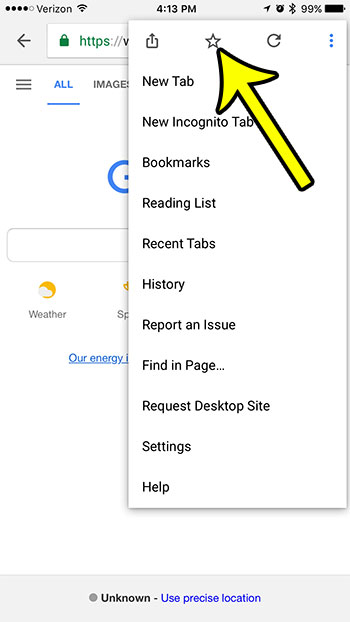

- Chrome having one bookmark multiple devices install#
- Chrome having one bookmark multiple devices update#
- Chrome having one bookmark multiple devices download#
After you install the Raindrop.io program as an app or extension and create a free account, you can import your existing local bookmarks into the service. You can view and use your bookmarks through the Raindrop toolbar icon or through the Raindrop pane. Accessing them online is just as convenient as accessing them locally, though not as fast. Instead of using and syncing your bookmarks locally, you do it through the Raindrop website. Raindrop.io works a bit differently than Eversync. Pay $4.99 a month (or $44.99 per year), and you can sync an unlimited number of bookmarks and restore a backup of your bookmarks from the past six months. The free Eversync service allows up to 15,000 bookmarks and stores two weeks of automatic backups. Nimbus encrypts your bookmarks to secure and protect them as they're being synchronized. Bookmarks can also be manually backed up to your account at any time, and then restored from a saved data set if you run into trouble with your current bookmarks. You can manually sync your bookmarks whenever you want and select an option to automatically sync them in the background every 30 minutes.
Chrome having one bookmark multiple devices download#
Then, you can merge your local bookmarks with those online, download the online versions to replace your local bookmarks, or upload your local bookmarks to replace the online versions. First, you must create an Eversync account to store your bookmarks online. For administrators who manage Chrome browser on Windows for a business or school.Eversync by Nimbus is an extension that can sync your bookmarks across Firefox and Chrome in Windows, iOS, and Android. You can let Microsoft ® Windows ® users in your organization create a single Chrome Browser profile and reuse it on each computer they need for work or school. To allow roaming profiles, you turn on Roaming User Profiles for these users. When a user signs in to Windows on a computer on your network, Windows copies information from the user’s roaming user profile to their local computer.
Chrome having one bookmark multiple devices update#
When they start Chrome, Chrome uses their roaming profile to update the local Chrome profile.Ī user’s roaming profile contains bookmarks, autofill data, passwords, some browsing history, browser preferences, and installed extensions. It doesn’t contain information about cookies, browsing sessions, cached or downloaded files, local browser instance data, or other transient data. Using Roaming User Profiles changes how your users can use Chrome Browser. To turn on the roaming profile option in Chrome Browser, enable the RoamingProfileSupportEnabled policy And they can’t synchronize their profiles with Chrome sync.īefore you turn on Roaming User Profiles, be aware of all the consequences listed in What to tell your users.įor example, a user can’t run Chrome Browser sessions on two machines simultaneously. Check if a device uses roaming profiles (optional) When you turn on roaming profile support, your users can’t use Chrome cloud sync. To see if a Windows computer is using Roaming User Profiles, enter chrome://sync-internals in the browser window on that computer. On the About page, under Local state, find Local Sync Backend Enabled.

If it’s true, then Roaming User Profiles is enabled.


 0 kommentar(er)
0 kommentar(er)
